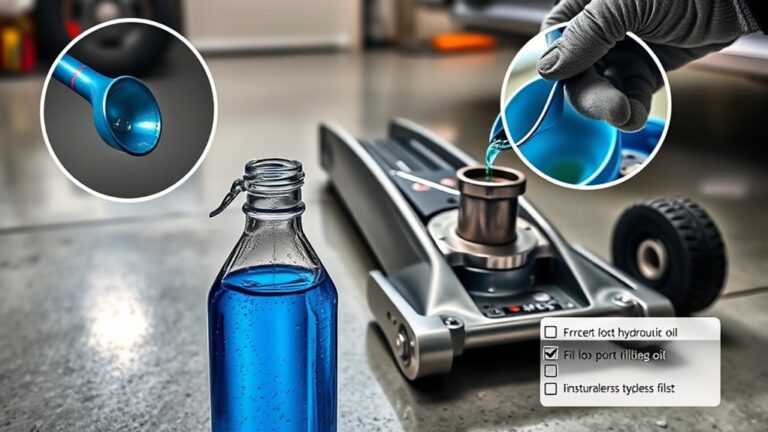You might see your dog dragging its butt on the floor because it’s trying to relieve irritation or discomfort, often caused by impacted anal glands, parasites like worms or fleas, or allergies. These issues lead to itching and inflammation around the anus. Diet and hygiene also play roles in preventing this behavior. If your dog’s scooting continues, understanding the underlying causes and how to address them can help keep your pet comfortable and healthy.
Common Causes of Butt Scooting in Dogs

Although it might look funny, when your dog drags its butt along the ground, it’s often a sign of discomfort or irritation. Butt scooting usually indicates issues related to dog hygiene or skin irritation around the rear. Common causes include allergies, flea infestations, or dirt buildup that causes itching. You might also notice scooting if your dog has worms or dirt stuck near its anus, both of which require attention. Keeping your dog’s rear clean and checking regularly can prevent many problems. It’s important to monitor these signs closely because your dog can’t tell you what’s wrong. Addressing the underlying cause quickly frees your dog from discomfort and lets them enjoy their freedom without irritation or pain.
Impacted or Infected Anal Glands
If your dog keeps dragging its butt, it might be due to impacted or infected anal glands, which can happen when these small sacs don’t empty properly. You’ll want to watch for signs like swelling, redness, or a foul odor around the rear, as these indicate discomfort or infection. Recognizing these symptoms early can help you get your dog the care they need quickly.
Causes of Anal Gland Issues
When your dog starts dragging its butt, it’s often a sign that their anal glands are causing discomfort due to being impacted or infected. Understanding the causes helps you keep your dog comfortable and maintain good dog hygiene. The anal gland anatomy plays an essential role—these small sacs near the anus store secretions that sometimes don’t express naturally. Here are common causes of anal gland issues:
- Poor Diet: Low fiber can lead to soft stools, preventing natural gland expression.
- Lack of Exercise: Inactivity may reduce muscle tone around glands.
- Obesity: Extra weight can compress glands, causing blockages.
- Chronic Diarrhea or Constipation: Both disrupt normal gland function.
Signs of Infection
A key sign that your dog’s anal glands are impacted or infected is frequent scooting or dragging their butt across the pavimento. You might also notice swelling, redness, or a foul odor around the area, which often signals bacterial infections. If your dog seems irritated, licks the area excessively, or shows signs of discomfort when sitting, these could be additional indicators of infection. Fungal infections, though less common, can cause similar symptoms and worsen if left untreated. It’s important to address these signs promptly to prevent pain and complications. You want your dog to feel free and comfortable, so consult your vet if you observe these symptoms. Early intervention can keep your dog healthy and happy, avoiding more serious issues down the road.
Parasites and Their Role in Scooting

Because parasites can cause significant irritation around your dog’s anus, they are often a primary reason for scooting behavior. When your dog drags its butt, it’s usually trying to relieve discomfort caused by these unwelcome guests. Common culprits include intestinal worms and flea infestations, both of which can irritate the sensitive skin and anal area.
Here are four key ways parasites contribute to scooting:
- Intestinal worms cause itching and inflammation around the anus.
- Flea infestations lead to constant biting and irritation.
- Parasites can block or inflame anal glands, prompting scooting.
- Some parasites induce secondary infections that worsen discomfort.
Understanding this helps you act swiftly, freeing your dog from distress and keeping their freedom of movement intact.
Skin Irritations and Allergies
If your dog is dragging its butt, skin irritations and allergies might be the cause. Common allergic reactions can lead to itching and discomfort around the anal area. Understanding how to treat these irritations can help your furry friend find relief quickly.
Common Allergic Reactions
While it might seem unusual, dogs often drag their butts because of common allergic reactions that cause skin irritations and discomfort. These allergic reactions can be triggered by various environmental factors or food ingredients, leading to common symptoms that make your dog want relief.
Here are four common allergic reactions to watch for:
- Flea allergy dermatitis – irritation caused by flea bites.
- Food allergies – reactions to certain proteins or additives.
- Contact allergies – sensitivity to grass, cleaning products, or fabrics.
- Environmental allergies – pollen, dust mites, or mold spores.
When your dog drags its butt, it’s often a sign that these allergic reactions are causing itching or inflammation around the anal area. Recognizing these symptoms early helps you provide the freedom your dog deserves from discomfort.
Treating Skin Irritations
Dealing with the discomfort your dog experiences from skin irritations means taking steps to soothe and heal the affected areas. Start by keeping the area clean with gentle skin care routines that avoid harsh chemicals. Soothing treatments like cool compresses or specially formulated ointments can reduce inflammation and itching. You’ll want to monitor your dog closely, ensuring they don’t worsen the irritation by excessive scratching or dragging. If the irritation persists or worsens, consult your vet for targeted remedies or allergy testing. Remember, effective skin care isn’t just about treating symptoms but preventing further issues, giving your dog the freedom to feel comfortable and enjoy life without discomfort or restrictions. Your attentive care makes all the difference in their recovery and well-being.
Dietary Factors Affecting Anal Health

Because your dog’s diet plays an essential role in maintaining anal health, it’s important to understand how certain foods can impact this area. You can help reduce discomfort and dragging by focusing on the right nutrients.
- Dietary fiber: Guarantees smooth digestion and prevents constipation, reducing strain on anal glands.
- Hydration: Sufficient water intake supports healthy stool consistency.
- Probiotic supplements: Promote balanced gut flora, aiding digestion and reducing irritation.
- Avoiding allergens: Foods that trigger allergies can cause inflammation, worsening anal discomfort.
When to See a Veterinarian
If your dog starts dragging their butt frequently or shows signs of pain, it’s important to consult a veterinarian promptly. Butt scooting can indicate underlying issues like impacted anal glands, infections, or allergies that need professional diagnosis. Don’t wait for symptoms to worsen—early veterinary consultation can prevent complications and relieve your pet’s discomfort quickly. Watch for additional signs such as swelling, redness, bleeding, or persistent scooting despite your efforts. These symptoms signal that home care isn’t enough and specialized treatment is necessary. Trusting your vet guarantees your dog receives accurate assessment and appropriate care. Remember, timely action supports your dog’s health and freedom from pain, helping them feel comfortable and happy again.
Home Remedies and Preventative Measures
Several simple home remedies can help ease your dog’s discomfort and reduce the chances of butt scooting. By adopting effective preventative measures, you can keep your furry friend feeling free and comfortable.
- Pulizia regolare: Gently clean the anal area with warm water to prevent irritation and infection.
- High-Fiber Diet: Adding fiber to their food promotes healthy digestion and eases anal gland expression.
- Warm Compress: Applying a warm compress can soothe inflamed glands and reduce itching.
- Exercise and Hydration: Keeping your dog active and well-hydrated supports overall digestive health.
These home remedies, combined with consistent preventative measures, help maintain your dog’s comfort and freedom from discomfort. If symptoms persist, consult your vet promptly.
Understanding Your Dog’s Behavior and Comfort
Keeping your dog comfortable involves more than just addressing physical symptoms like scooting; it also means paying close attention to their behavior. Dogs communicate through subtle behavioral signals, so understanding these cues is key to recognizing discomfort or distress. When your dog drags their butt, it’s a form of dog communication indicating irritation or an underlying issue. By observing their overall behavior—energy levels, appetite, and reactions—you gain insight into their well-being. Responding promptly to these signals not only relieves immediate discomfort but also strengthens your bond, giving your dog the freedom to express themselves without restraint. Embracing this attentive approach guarantees your dog feels safe, heard, and comfortable in their environment, making their health and happiness your top priority.




